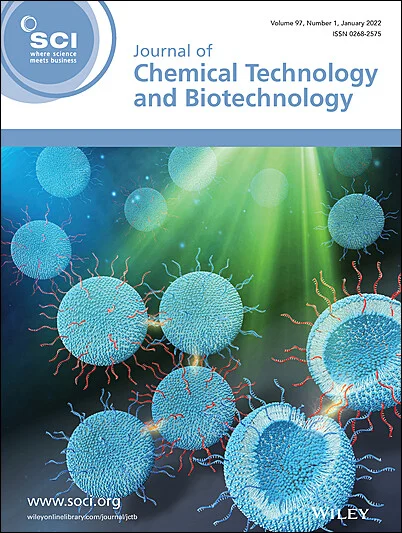Ayman El-Sawaf, Dina A. Tolan, Maiada S. Abdelrahman, Islam Abd El-Hay, Mohamed Ismael, Abdelaal S. A. Ahmed, Emad A. Elshehy, Mahmoud T. Abdu
求助PDF
{"title":"原位快速合成介孔普鲁士蓝-二氧化硅纳米复合材料,实现卓越的银离子回收性能","authors":"Ayman El-Sawaf, Dina A. Tolan, Maiada S. Abdelrahman, Islam Abd El-Hay, Mohamed Ismael, Abdelaal S. A. Ahmed, Emad A. Elshehy, Mahmoud T. Abdu","doi":"10.1002/jctb.7707","DOIUrl":null,"url":null,"abstract":"<div>\n \n \n <section>\n \n <h3> BACKGROUND</h3>\n \n <p>Mesoporous-nanostructured silica-Prussian blue composite is a highly potential material for silver ions removal and recovery from wastewater. Intense interest has been shown in the use of Prussian blue (PB), one of the important coordinated materials and its analogues in removal of toxic and valuable ions.</p>\n </section>\n \n <section>\n \n <h3> METHODS</h3>\n \n <p>The micro-emulsion template method enables the synthesis of Prussian blue (PB) within silica pores, yielding a nanostructured mesoporous silica-PB composite. This rapid synthesis technique allows for the direct fabrication of the composite from mixed precursor solutions within minutes. The resulting material is effective for selectively extracting silver ions from wastewater at a specific pH level.</p>\n </section>\n \n <section>\n \n <h3> RESULTS AND DISCUSSION</h3>\n \n <p>In summary, the synthesized SiO<sub>2</sub>-Prussian blue composite was extensively analyzed using various techniques including XPS, HR-TEM, SEM, STEM-EDX elemental maps, TGA/TDA, and N<sub>2</sub> adsorption/desorption measurements. The composite exhibited a BET surface area of 203 m<sup>2</sup> g<sup>−1</sup> and a total pore volume of approximately 0.283 cm<sup>3</sup> g<sup>−1</sup>with mesopores centered around 20 nm. This mesoporous SiO<sub>2</sub>-Prussian blue demonstrated significant effectiveness in removing silver ions, with a maximum adsorption capacity of 107.5 mg g<sup>−1</sup>. The Langmuir and Sips isotherms showed the best fit among various adsorption isotherm types, with R<sup>2</sup> values exceeding 0.984. Additionally, kinetic analyses revealed that the pseudo-second-order model accurately described the adsorption of silver ions onto the synthesized adsorbent. The nano-particles exhibit remarkable long-term stability, maintaining good reproducibility even after five regeneration cycles. © 2024 Society of Chemical Industry (SCI).</p>\n </section>\n </div>","PeriodicalId":15335,"journal":{"name":"Journal of chemical technology and biotechnology","volume":"99 9","pages":"1941-1954"},"PeriodicalIF":2.8000,"publicationDate":"2024-07-11","publicationTypes":"Journal Article","fieldsOfStudy":null,"isOpenAccess":false,"openAccessPdf":"","citationCount":"0","resultStr":"{\"title\":\"Fast in-situ synthesis of mesoporous Prussian blue-silica nanocomposite for superior silver ions recovery performance\",\"authors\":\"Ayman El-Sawaf, Dina A. Tolan, Maiada S. Abdelrahman, Islam Abd El-Hay, Mohamed Ismael, Abdelaal S. A. Ahmed, Emad A. Elshehy, Mahmoud T. Abdu\",\"doi\":\"10.1002/jctb.7707\",\"DOIUrl\":null,\"url\":null,\"abstract\":\"<div>\\n \\n \\n <section>\\n \\n <h3> BACKGROUND</h3>\\n \\n <p>Mesoporous-nanostructured silica-Prussian blue composite is a highly potential material for silver ions removal and recovery from wastewater. Intense interest has been shown in the use of Prussian blue (PB), one of the important coordinated materials and its analogues in removal of toxic and valuable ions.</p>\\n </section>\\n \\n <section>\\n \\n <h3> METHODS</h3>\\n \\n <p>The micro-emulsion template method enables the synthesis of Prussian blue (PB) within silica pores, yielding a nanostructured mesoporous silica-PB composite. This rapid synthesis technique allows for the direct fabrication of the composite from mixed precursor solutions within minutes. The resulting material is effective for selectively extracting silver ions from wastewater at a specific pH level.</p>\\n </section>\\n \\n <section>\\n \\n <h3> RESULTS AND DISCUSSION</h3>\\n \\n <p>In summary, the synthesized SiO<sub>2</sub>-Prussian blue composite was extensively analyzed using various techniques including XPS, HR-TEM, SEM, STEM-EDX elemental maps, TGA/TDA, and N<sub>2</sub> adsorption/desorption measurements. The composite exhibited a BET surface area of 203 m<sup>2</sup> g<sup>−1</sup> and a total pore volume of approximately 0.283 cm<sup>3</sup> g<sup>−1</sup>with mesopores centered around 20 nm. This mesoporous SiO<sub>2</sub>-Prussian blue demonstrated significant effectiveness in removing silver ions, with a maximum adsorption capacity of 107.5 mg g<sup>−1</sup>. The Langmuir and Sips isotherms showed the best fit among various adsorption isotherm types, with R<sup>2</sup> values exceeding 0.984. Additionally, kinetic analyses revealed that the pseudo-second-order model accurately described the adsorption of silver ions onto the synthesized adsorbent. The nano-particles exhibit remarkable long-term stability, maintaining good reproducibility even after five regeneration cycles. © 2024 Society of Chemical Industry (SCI).</p>\\n </section>\\n </div>\",\"PeriodicalId\":15335,\"journal\":{\"name\":\"Journal of chemical technology and biotechnology\",\"volume\":\"99 9\",\"pages\":\"1941-1954\"},\"PeriodicalIF\":2.8000,\"publicationDate\":\"2024-07-11\",\"publicationTypes\":\"Journal Article\",\"fieldsOfStudy\":null,\"isOpenAccess\":false,\"openAccessPdf\":\"\",\"citationCount\":\"0\",\"resultStr\":null,\"platform\":\"Semanticscholar\",\"paperid\":null,\"PeriodicalName\":\"Journal of chemical technology and biotechnology\",\"FirstCategoryId\":\"5\",\"ListUrlMain\":\"https://onlinelibrary.wiley.com/doi/10.1002/jctb.7707\",\"RegionNum\":4,\"RegionCategory\":\"生物学\",\"ArticlePicture\":[],\"TitleCN\":null,\"AbstractTextCN\":null,\"PMCID\":null,\"EPubDate\":\"\",\"PubModel\":\"\",\"JCR\":\"Q3\",\"JCRName\":\"BIOTECHNOLOGY & APPLIED MICROBIOLOGY\",\"Score\":null,\"Total\":0}","platform":"Semanticscholar","paperid":null,"PeriodicalName":"Journal of chemical technology and biotechnology","FirstCategoryId":"5","ListUrlMain":"https://onlinelibrary.wiley.com/doi/10.1002/jctb.7707","RegionNum":4,"RegionCategory":"生物学","ArticlePicture":[],"TitleCN":null,"AbstractTextCN":null,"PMCID":null,"EPubDate":"","PubModel":"","JCR":"Q3","JCRName":"BIOTECHNOLOGY & APPLIED MICROBIOLOGY","Score":null,"Total":0}
引用次数: 0
引用
批量引用

 求助内容:
求助内容: 应助结果提醒方式:
应助结果提醒方式:


